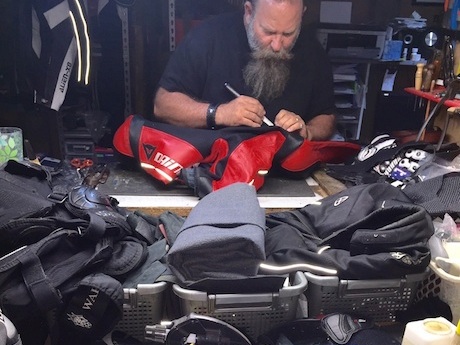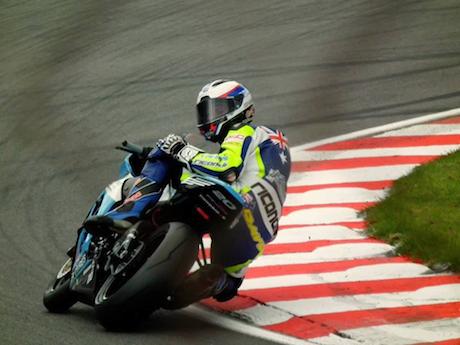We all know that motorcycle leathers are the most protective clothing in a crash – have you ever seen a cow with gravel rash!
But they also deteriorate with age, so you have to look after them.
Phil Rudd of HiSide Leathers, Brisbane, has been around the industry “a bazillion years”, so there are few better qualified to give such advice. It’s fair to say Phil has modified or repaired more leather suits, jackets, gloves and boots than most of us have had hot dinners.

For over a decade he attended race meetings around Australia modifying or repairing damaged race suits before opening his own business in Brisbane.
Brisbane motorcycle riding gear designer Andrew Smart of Ricondi spoke recently with Phil and gleaned some great advice for riders on maintaining a leather suit, or jacket, particularly over summer.
Phil says the salt in sweat “kills leathers” as it pulls the oils out of the leather.
He suggests pulling the sweaty jacket or suit inside out to let it air. “To do this you may need to remove the internal armour if possible. If you cannot do this then hang the garment in a ventilated, but shaded area. In most cases the garments are not UV stabilised, so keeping them out of direct sunlight is preferable. Most stink if they get put away without at least hanging and airing.”
The odour comes from the transfer of bacteria. If left untreated, it will quickly develop a pretty bad smell. “If this happens hit it with some Fabreeze or something similar that can kill bacteria and break down the smell. However, once again get it out in the shade and let it air,” says Phil.
Storing your leathers is also important to prevent them developing mould, or drying out which makes them shrink or become stiff.
Phil suggests that after your motorcycle leathers have dried and aired, riders should give them a good treatment of lanolin. “Some people may use Dubbin, or some form of leather cream. We use Lanomax, which is readily available and what we find the most effective. A little bit of lanolin goes a very long way and gets the oils back into the leather,” he says.
“It’s ok to wash this salt off with water but in doing so you are also possibly washing away the oils from the leather. So a treatment of lanolin is essential to get some oils back into the leather.”
Phil recommends that if you are going to hang up your leathers for an extended time, it’s worth getting silica gel packs such as “moisture pouch” to store with your motorcycle leathers.
He says the best way to avoid offensive motorcycle leathers is to wear a compression suit, which creates a barrier between the rider and the suit, soaking up much of the sweat.
- Ricondi stands for “riding conditions” and was started in Andrew Smart’s home a few years ago. He’s mainly concentrated on road racing gear distinguished by their high-specification large stretch panels for comfort and flexibility. A key to safety is the stitching which is multi row and reinforced on the inside so the seams are flat. All single and two-piece Ricondi motorcycle leathers are made of full-grain cow or roo hide.


